AEO vs. SEO: Strategic Integration for Modern Search Success
53% of all website traffic comes from organic search, making SEO an undeniable cornerstone of digital marketing success. But as AI-powered search experiences transform how people find information online, a new approach has emerged: Answer Engine Optimization (AEO). The strategic interplay between AEO vs. SEO represents one of the most significant evolutions in search marketing strategy since mobile optimization.
For marketing professionals, understanding when to deploy traditional SEO tactics versus AEO strategies—and how to integrate them effectively—can mean the difference between digital obscurity and search dominance. The data reveals a clear trend: as conversational search queries continue to rise and AI-powered answer engines gain prominence, brands need a dual strategy that captures both traditional search traffic and immediate answer opportunities.
Key Takeaways
-
SEO drives traffic through traditional search results, while AEO targets direct answers in AI-powered search experiences, focusing on instant response opportunities.
-
With 58% of search queries becoming conversational, AEO is crucial for capturing voice search and providing immediate answers.
-
Despite AEO’s growth, SEO still accounts for over 50% of website traffic, particularly for users seeking in-depth information and comparisons.
-
Combining AEO and SEO boosts performance, with 14% higher click-through rates seen in hybrid approaches compared to traditional SEO.
-
To succeed in both, marketers must structure content for dual optimization, incorporating Q&A formats, schema markup, and concise answers.
-
As AI and multimodal search evolve, marketers must adapt by optimizing content across various platforms, ensuring flexibility for emerging search behaviors.
TABLE OF CONTENTS:
Understanding the Fundamentals: SEO vs. AEO Defined
What Is SEO?
Search Engine Optimization (SEO) is the practice of enhancing a website’s visibility in traditional search engine results pages (SERPs). This established discipline focuses on ranking websites higher for relevant queries through technical optimization, content creation, and authority building.
Traditional SEO targets a broad spectrum of search behaviors—informational queries (“how to optimize a website”), navigational searches (“single grain digital agency”), and transactional inquiries (“buy marketing services online”). SEO success is typically measured through metrics like organic traffic volume, keyword rankings, and domain authority.
What Is AEO?
Answer Engine Optimization (AEO) is the emerging practice of structuring content specifically to be featured as direct answers in AI-powered search experiences. Unlike traditional SEO, AEO focuses on optimizing content to appear in featured snippets, voice search results, AI chatbots, and other zero-click search experiences.
AEO targets highly specific, often conversational queries where users expect immediate answers rather than multiple search results to explore. For instance, when someone asks, “What’s the difference between AEO and SEO?” via voice search, AEO-optimized content aims to be the single answer provided.
Key Differences Between AEO and SEO
The distinction between these two optimization approaches extends beyond their definitions. Let’s examine how they differ across several critical dimensions:
Goals and Outcomes
| Aspect | SEO | AEO |
|---|---|---|
| Primary Goal | Drive website traffic | Provide immediate answers |
| User Intent | Browse multiple results | Get quick, specific answers |
| Content Exposure | Full webpage visibility | Featured snippet or voice answer |
| Traffic Impact | Higher overall traffic volume | Potentially lower click-through rate |
Optimization Techniques
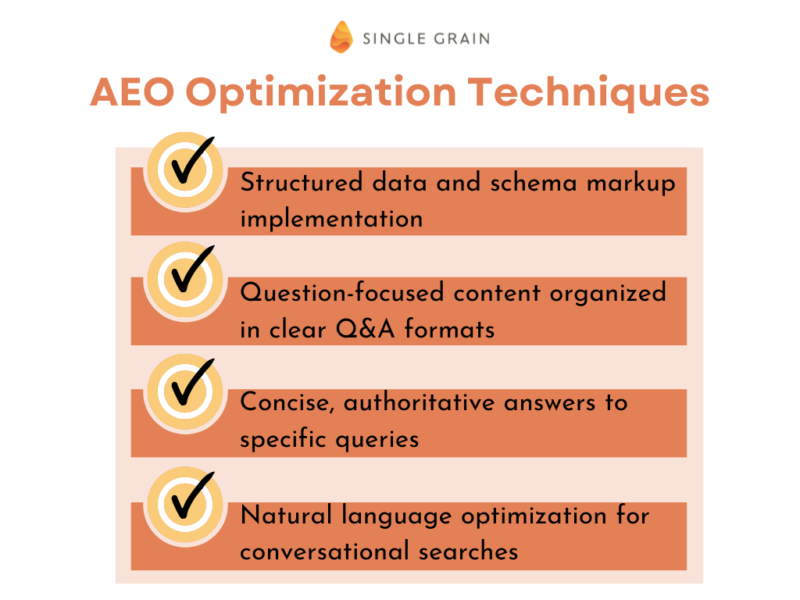
SEO relies on established techniques like keyword research, meta tag optimization, backlink building, and technical site improvements. In contrast, AEO requires:
- Structured data and schema markup implementation
- Question-focused content organized in clear Q&A formats
- Concise, authoritative answers to specific queries
- Natural language optimization for conversational searches
According to recent data, the average AEO-optimized page sees a 14% higher click-through rate (CTR) than standard SEO pages. This performance advantage highlights why more marketers are incorporating AEO tactics into their search strategy.
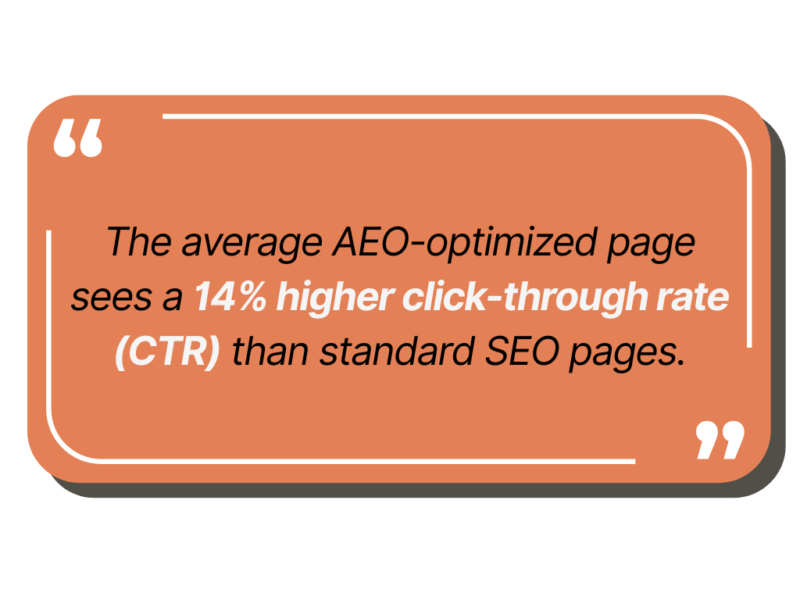
Content Structure Requirements
SEO content typically follows a comprehensive approach, covering topics in-depth to demonstrate expertise and authority. Conversely, AEO content must be:
- Direct and concise, providing immediate value
- Structured with clear headings that mirror likely questions
- Formatted to facilitate feature snippet selection
- Enhanced with supporting data that establishes credibility
This fundamental shift in content structure represents one of the most significant adaptations marketers must make when transitioning from pure SEO to an integrated AEO approach.
The Rising Importance of AEO in Modern Search
Several converging trends are elevating the importance of Answer Engine Optimization:
Conversational Search Revolution
Over 58% of search queries in 2025 are now conversational in nature. This dramatic shift reflects the growing user preference for natural language interactions with search tools—asking complete questions rather than typing fragmented keyword phrases.
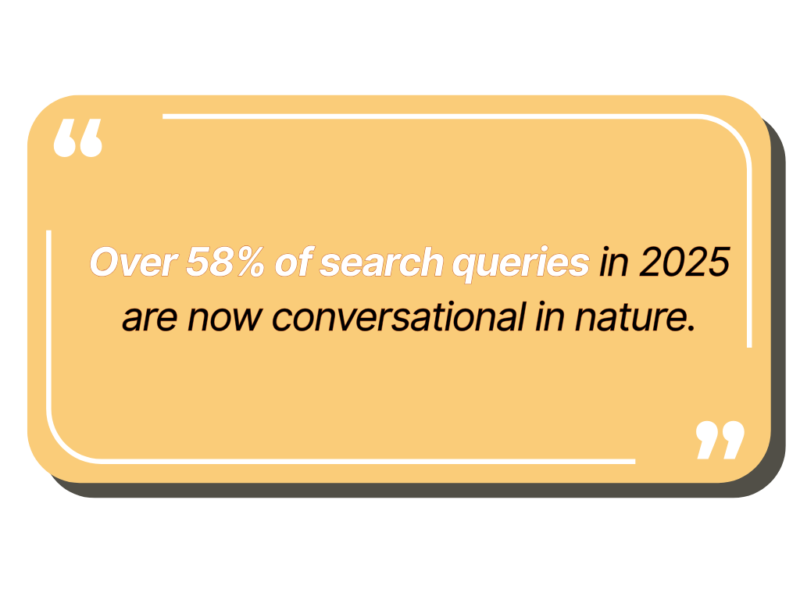
This evolution demands content that directly answers questions rather than simply containing relevant keywords. For marketers, this means reimagining content creation through the lens of conversational queries.
Voice Search Acceleration
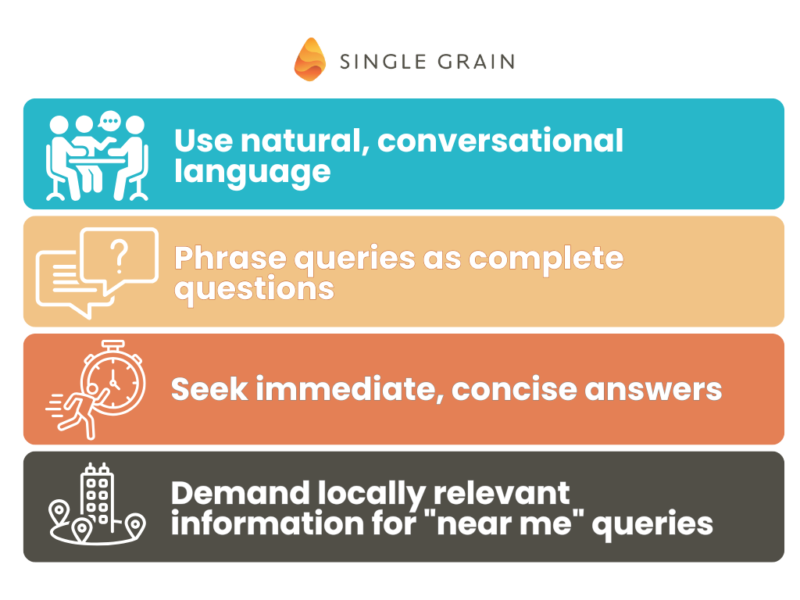
The proliferation of smart speakers, virtual assistants, and voice-enabled devices has fundamentally altered how users interact with search engines. Voice searches typically:
- Use natural, conversational language
- Phrase queries as complete questions
- Seek immediate, concise answers
- Demand locally relevant information for “near me” queries
For voice search optimization, AEO provides the framework necessary to capture this growing segment of search traffic.
The Zero-Click Search Phenomenon
When users get their answers directly in search results—through featured snippets, knowledge panels, or AI overviews—they often don’t click through to websites. This “zero-click” trend might seem concerning for traffic-focused marketers, but it presents new opportunities:
- Enhanced brand visibility through featured content
- Improved perception as an authoritative source
- Opportunities to capture related searches
- Strategic positioning for voice search dominance
Case Study: LS Building Products
Challenge: LA Building Products wanted to expand beyond traditional SEO and tap into AI.
Solution: Single Grain Marketing strengthened its presence across all major AI search engines using a combination of SEvO, AIO, and LLM strategies.
Results: LS Building Products experienced a 67% increase in organic traffic.
Key Takeaway: Leveraging AI not only enhances presence in AI search but also improves traditional SEO results.
Enhanced User Experience Expectations
83% of survey respondents prefer AI search over traditional results. This improved specificity creates a user experience expectation that traditional search results may not satisfy.
After implementing AEO strategies, marketers can meet these elevated expectations while positioning their content for maximum visibility in both traditional and AI-driven search environments.
Why SEO Remains Essential Despite AEO’s Rise
While AEO represents an important evolution in search optimization, traditional SEO maintains its crucial role in digital marketing success:
Foundation of Organic Discovery
The data speaks for itself: 53% of all website traffic comes from organic search. This statistic underscores SEO’s continued relevance as the primary driver of website discovery and engagement.
Traditional search behaviors—browsing multiple results, conducting comparative research, and exploring topics in depth—remain fundamental to how most users interact with search engines. SEO optimization ensures your content remains visible during these critical discovery phases.
Authority Building for AI Consideration
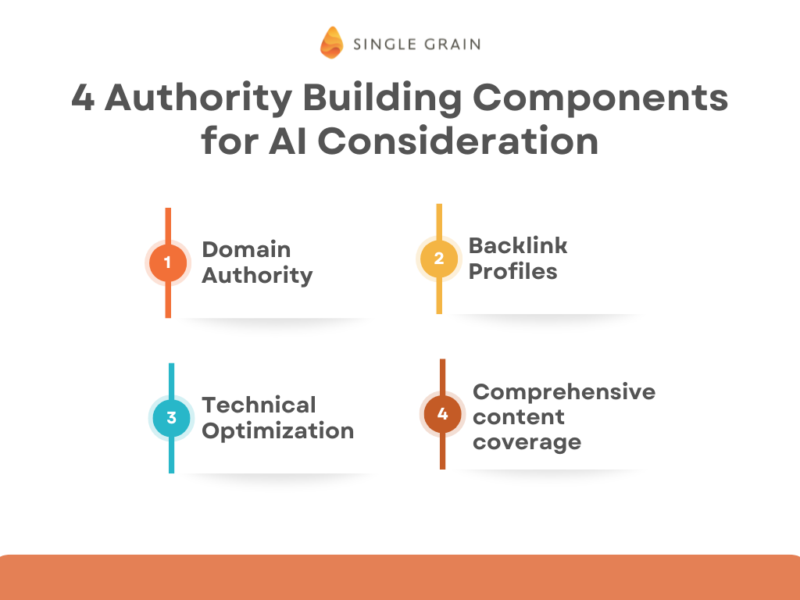
Interestingly, AI-powered search engines and answer platforms often rely on traditional SEO signals when determining which content to feature in direct answers. Sites with these strong components tend to be favored as sources for AI-generated answers:
- Domain authority
- Backlink profiles
- Technical optimization
- Comprehensive content coverage
This creates a symbiotic relationship between SEO and AEO, where strong SEO performance enhances AEO opportunities.
Traffic Generation Beyond Quick Answers
While AEO excels at capturing specific question-based searches, SEO’s broader approach captures diverse traffic sources that AEO might miss:
- Research-oriented users seeking in-depth information
- Browsers exploring topics without specific questions
- Comparison shoppers evaluating multiple options
- Professional researchers gathering comprehensive data
For most businesses, abandoning traditional SEO for exclusive AEO focus would result in significant traffic losses from these valuable segments.
Integration Strategies: The Hybrid AEO+SEO Approach
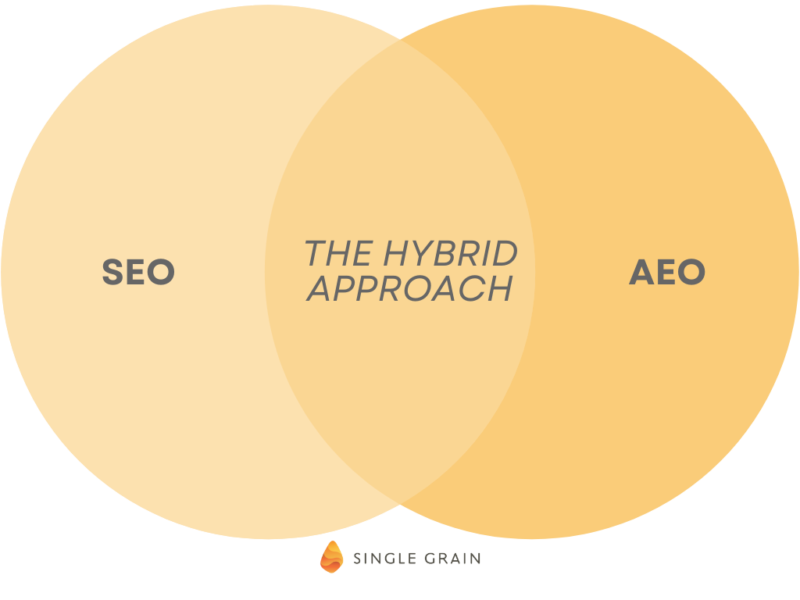
Rather than viewing AEO and SEO as competing strategies, forward-thinking marketers are developing integrated approaches that leverage the strengths of both services. Data supports this strategy, with 54% of organizations reporting improved click-through rates within six months of adopting a hybrid AEO + SEO strategy in 2024.
Content Architecture for Dual Optimization
The foundation of an effective hybrid approach is content that serves both traditional SEO needs and AEO requirements:
- Core SEO Pages: Comprehensive, keyword-optimized resources that establish topical authority
- Integrated FAQ Sections: Structured question-answer segments that target specific queries
- Schema Implementation: Technical markup that helps search engines understand and feature your content
- Answer-Optimized Subheadings: H2s and H3s formatted as questions users actually ask
This layered approach satisfies both the depth requirements of SEO and the direct-answer needs of AEO without creating duplicate content issues.
Keyword Strategy Refinement
A successful hybrid approach requires expanding traditional keyword research to include:
- Question-based queries (Who, What, When, Where, Why, How)
- Conversational variations of primary keywords
- Long-tail phrases that reflect natural speech patterns
- Local-intent questions for businesses with physical locations
Tools like AI-powered SEO platforms can help identify these question-based opportunities while maintaining visibility for traditional keyword targets.
Technical Optimization Priorities
| Element | SEO Benefit | AEO Benefit |
|---|---|---|
| Schema Markup | Enhanced rich results | Increased answer selection |
| Page Speed | Better rankings | Faster answer retrieval |
| Mobile Optimization | Improved mobile rankings | Better voice search performance |
| Natural Language Processing | Enhanced content relevance | Improved answer matching |
| Structured Data | Rich snippet opportunities | Direct answer selection |
Measurement Framework Evolution
Tracking success in a hybrid model requires expanding traditional SEO metrics to include AEO-specific indicators:
- Featured snippet appearances
- Voice search response rates
- Zero-click search prominence
- Answer box selection frequency
- AI overview inclusion rate
By monitoring both SEO and AEO metrics, marketers can ensure their integrated approach delivers comprehensive search visibility.
Practical Implementation Guide: AEO vs. SEO in Action
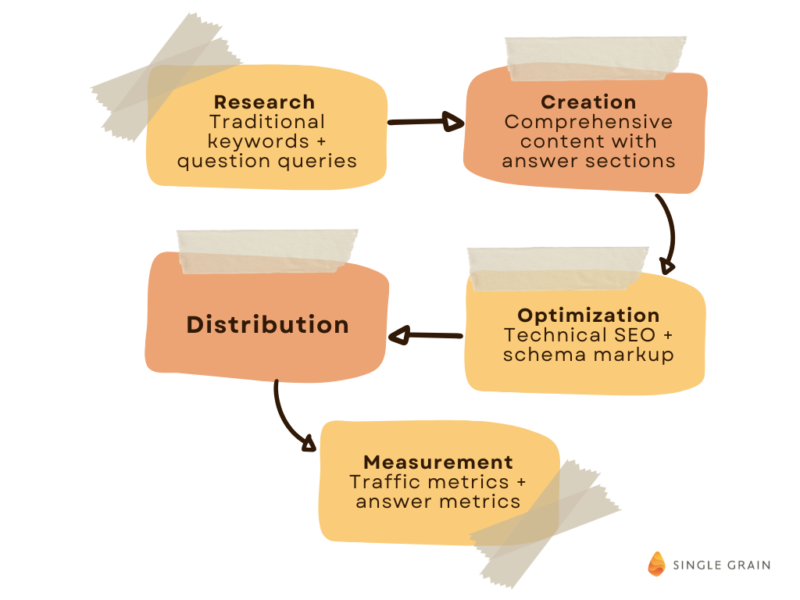
Transitioning from a pure SEO approach to an integrated AEO+SEO strategy requires methodical implementation. Here’s a practical framework for marketing professionals looking to enhance their search presence across both disciplines:
Step 1: Conduct an Answer Opportunity Audit
Begin by assessing your current content for potential AEO enhancement:
- Identify top-performing SEO pages with high traffic and engagement
- Analyze search queries that drive traffic to these pages
- Determine which queries have question intent or featured snippet potential
- Prioritize pages based on answer opportunity volume and business impact
This audit establishes where AEO can most effectively complement your existing SEO success.
Step 2: Restructure Content for Dual Optimization
For each priority page:
- Add a concise, direct answer section addressing the main question (40-60 words)
- Implement FAQ schema markup for secondary questions
- Restructure headings to mirror common question formats
- Ensure mobile-friendly formatting for voice search readiness
- Retain comprehensive SEO content below the answer section
This approach satisfies both immediate answer seekers and in-depth researchers.
Case Study: Winedeals
- Challenge: Winedeals’ content had low click-through rates, and creating content became too expensive and time-consuming.
- Solution: Single Grain Marketing scaled content production with AI.
- Results: Winedeals experienced a 325% increase in CTRs and drove more conversions.
- Key Takeaway: Scaling content creation improved Winedeal’s SEO and visibility, which translated into more engagements and conversions.
Step 3: Develop a Specialized AEO Content Pipeline
While enhancing existing content is essential, creating dedicated AEO-focused resources can accelerate results:
- Research high-value questions in your industry that currently lack satisfactory answers
- Create concise, authoritative responses with supporting evidence
- Package answers in both webpage and structured data formats
- Implement technical enhancements like a speakable schema for voice search
This specialized content addresses the unique needs of answer engines while contributing to your site’s overall SEO authority through comprehensive SEO auditing and optimization.
Step 4: Technical Implementation Priorities
The technical foundation for an integrated approach includes:
- Schema.org markup implementation (particularly HowTo, FAQ, and QAPage schemas)
- Structured data testing and validation
- Page speed optimization for both desktop and mobile
- Core Web Vitals optimization
- Voice search readiness assessment
These technical elements support both traditional SEO performance and AEO visibility.
Step 5: Measurement and Refinement
Establish a measurement framework that captures both SEO and AEO performance:
- Track featured snippet acquisition rates
- Monitor voice search impressions via Search Console
- Analyze click-through rates for pages with answer optimization
- Compare conversion metrics between standard pages and AEO-enhanced pages
This comprehensive measurement approach enables continuous optimization of your integrated strategy.
Future Outlook: The Evolving AEO vs. SEO Landscape
As search technology continues to evolve, the relationship between AEO and SEO will transform accordingly. Marketing professionals should prepare for these emerging trends:
AI-Generated Search Results Expansion
Major search engines are increasingly implementing AI-generated answer summaries at the top of search results. These summaries compile information from multiple sources, fundamentally changing how users interact with search results.
For marketers, this means:
- Creating authoritative, factually precise content becomes even more critical
- Structured data implementation grows in importance
- Citation-worthy content gains preference in AI-generated summaries
- Clear, direct answers increase selection probability
Multimodal Search Integration
The future of search extends beyond text to include images, audio, and video content analysis. This multimodal search approach requires extending AEO principles to visual and audio content through:
- Comprehensive alt text optimization
- Audio transcription and optimization
- Video content structuring with clear question-answer segments
- Audio SEO implementation for podcasts and audio content
Organizations that optimize across all content types will maintain visibility as search diversifies beyond text.
Personalized Answer Delivery
Search engines and answer platforms are increasingly tailoring results based on user history, preferences, and behavior. This personalization trend means:
- Industry-specific answer optimization becomes more important
- Local answer optimization gains priority for regional businesses
- User intent signals receive greater emphasis
- Demographic and preference targeting enter the AEO equation
Industry-Specific Optimization Divergence
Different industries will see varying balances between AEO and SEO importance:
| Industry | SEO Priority | AEO Priority | Strategic Focus |
|---|---|---|---|
| E-commerce | High | Medium | Product-specific question optimization |
| Healthcare | Medium | Very High | Medical query direct answers |
| Finance | High | High | Balance of resources and quick answers |
| Fashion | High | Medium | Visual search with answer enhancement |
| Local Services | Medium | Very High | Location-specific answer targeting |
Understanding your industry’s unique search behavior will inform the optimal balance between AEO and SEO investment.
Building a Balanced AEO and SEO Strategy
The relationship between AEO and SEO isn’t antagonistic—it’s synergistic. Rather than viewing them as competing approaches, effective marketers recognize them as complementary strategies addressing different aspects of the modern search ecosystem.
The data makes this clear: traditional SEO remains fundamental, with 53% of website traffic coming from organic search, while AEO-optimized content delivers 14% higher click-through rates compared to standard SEO pages. Meanwhile, organizations implementing hybrid strategies report improved performance metrics within six months.
As search continues to evolve, the most successful digital marketing strategies will:
- Maintain SEO fundamentals as the foundation of organic visibility
- Implement AEO enhancements to capture featured snippets and voice search
- Develop specialized answer content for high-value question queries
- Adapt measurement frameworks to track both traffic and answer visibility
The strategic tension between different search approaches has always driven marketing innovation. The AEO vs. SEO dynamic represents the latest iteration of this productive tension—challenging marketers to expand their capabilities while refining existing best practices.
For organizations seeking to maximize search visibility across all platforms, consider working with the leading digital marketing agency that understands both the established principles of SEO and the emerging requirements of AEO.




